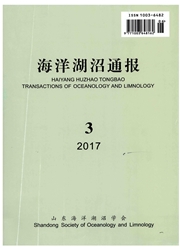

 中文摘要:
中文摘要:
本文以海带(Saccharina japonica)配子体、配子体克隆及幼孢子体为实验材料,研究了不同发育时期的海带对草甘膦、草丁膦、氯霉素的敏感性,经SPSS软件计算出一定时间内3种选择试剂对不同发育时期海带的半致死剂量(LD50)。结果表明:海带配子体及配子体克隆对草甘膦和草丁膦极为敏感,对氯霉素较为敏感。4d时,草甘膦和草丁膦对海带配子体的LD50分别为8.19μg/mL和19.27μg/mL,对海带配子体克隆的LDs。分别为73.69μg/mL和39.08μg/mL;而氯霉素对海带配子体及配子体克隆4天的LD5。则高达742.00μg/mL和701.51μg/mL。海带幼孢子体仅对草甘膦极为敏感,4d的LD50为40.93μg/mL;对草丁膦和氯霉素较为敏感,4d的LD50分别为214.51μg/mL和907.86μg/mL。该结果说明草甘膦和草丁膦适合作为以海带配子体和配子体克隆为实验材料的基因工程选择试剂,草甘膦则更适合以海带幼孢子体为实验材料的基因工程选择试剂。
 英文摘要:
英文摘要:
To obtain suitable selective markers is a key step for acquiring transgenic kelp. In this study the sensitivity of Saccharina japonica at three development stages including gametophyte, gametophyte clon and young sporophyte was studied under the treatment of three selective reagents including glyphosate (Glp), glufosinate (Glu), and chloramphenicol (Chl). The semi-lethal dose (LD50) of three reagents at certain period was calculated by the SPSS software. The result showed that S. japonica gametophyte and gametophyte clone were sensitive to chloramphenicol, particularly to glyphosate and glufosinate. At the fourth day, the LD50 of gametophyte was 8.19 μg/mL to Glp, 19.27μg/mL to Glu, and the LD50 of gametophyte clone was 73.69μg/mL to Glp, 39.08μg/mL to Glu. The LD50 of Chl was 701.51μg/mL and 742. 00μg/mL to the gametophyte and gametophyte clone, respectively. S. japonica young sporophyte, however, demonstrated higher sensitity to Glp (40.93μg/mL) than to Glu (214.51μg/mL) and Chl (907.86μg/mL). These results indicated that the glyphosate and glufosinate were Suitable selective markers for S. japonica gametophyte and gametophyte clone, while the glyphosate was a suitable selective marker for S. japonica young sporophyte.
 同期刊论文项目
同期刊论文项目
 同项目期刊论文
同项目期刊论文
 期刊信息
期刊信息
